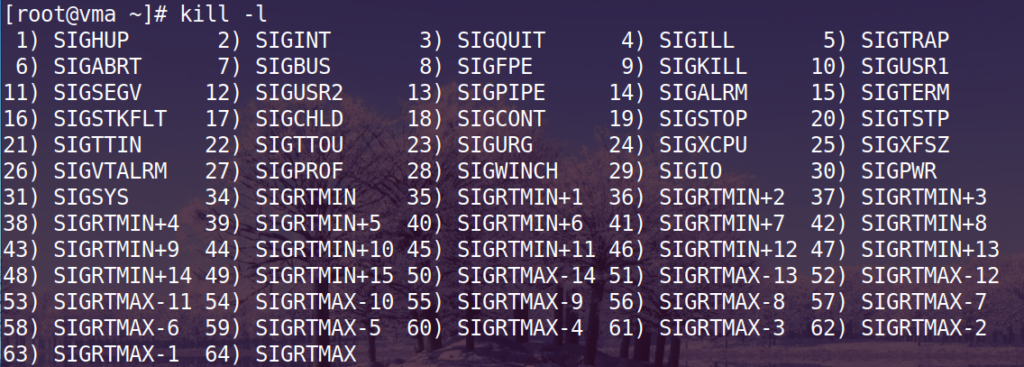With this guide you have some useful kill command examples which help you termite a process in Linux. The first step in killing the unresponsive process is locating it. There are two commands I use to locate a process: top and ps. Top is a tool every administrator should get to know. With top, you get a full listing of currently running process. From the Linux command line, issue top to see a list of your running processes
NAME
kill - send a signal to a processSYNOPSIS
kill [options] […]DESCRIPTION
The default signal for kill is TERM. Use -l or -L to list available signals. Particularly useful signals include HUP, INT, KILL, STOP, CONT, and 0. Alternate signals may be specified in three ways: -9, -SIGKILL or -KILL. Negative PID values may be used to choose whole process groups; see the PGID column in ps command output. A PID of -1 is special; it indicates all processes except the kill process itself and init.
OPTIONS
[…]Send signal to every listed.
-<signal>
-s <signal>
--signal <signal>Specify the signal to be sent. The signal can be specified by using name or number. The behavior of signals is explained in signal(7) manual page.
-l, --list [signal]List signal names. This option has optional argument, which will convert signal number to signal name, or other way round.
-L, --tableList signal names in a nice table.
NOTES
Your shell (command line interpreter) may have a built-in kill command. You may need to run the command described here as /bin/kill to solve the conflict.5
Kill Command Examples
To list the signal names, pass the -l option as follows:
kill -l
The kill privileged process/PID owned by root.
su -
Password:
pgrep httpd
3915
# kill 3915Kill all processes you can kill.
kill -9 -1Translate number 11 into a signal name.
kill -l 11List the available signal choices in a nice table.
kill -LSend the default signal, SIGTERM, to all those processes.
kill 123 543 2341 3453SEE ALSO
kill(2), killall(1), nice(1), pkill(1), renice(1), signal(7), skill(1)
STANDARDS
This command meets appropriate standards. The -L flag is Linux-specific.
Linux Command Basics: 7 commands for process management
